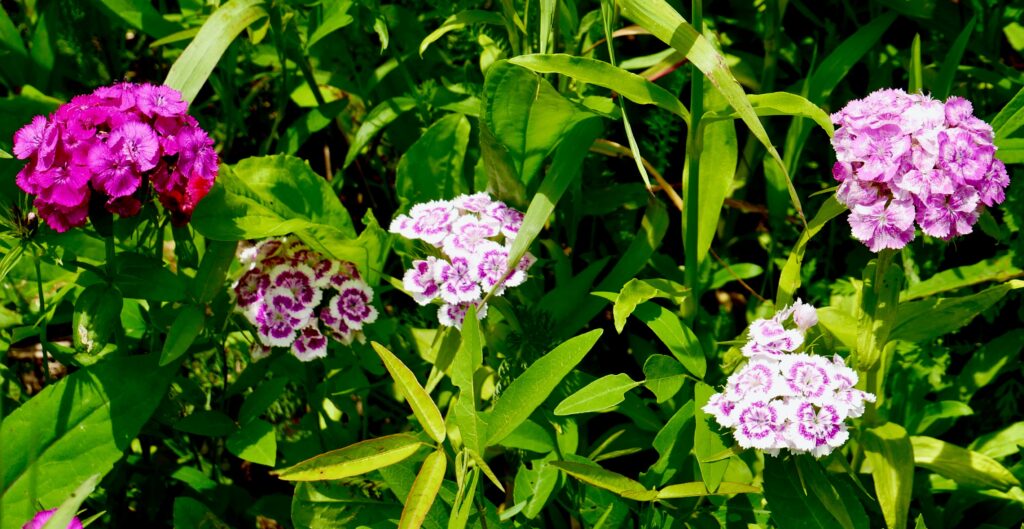By David P. Davis
Newsroom@DominionPost.com
At the West Virginia Botanic Garden, many species are still in bloom from prior columns, including peonies, mints and alliums of all kinds. This week, some self-seeding annuals and perennials are coming into bloom to make things even more interesting. These include Papaver, Nigella and Coreopsis.
Papaver is the genus name for the poppy family, which is popular with many gardeners. In the Yagle Garden, we have some huge, red, double poppies (Papaver somniferum) that have self-seeded throughout the beds. These poppies reach about three feet tall, have silvery-ruffled foliage, and multiple large, red blooms reaching six inches across. We also have some smaller, red corn poppies (Papaver rhoeas) coming into bloom in the pollinator beds alongside the dame’s rockets (also known as dame’s-violets) and Siberian wallflowers.
Nigella damascena, or love-in-a-mist, is an annual flowering plant in the buttercup family. Nigella is a smaller plant, reaching only 20 inches or so, with thread-like foliage and smaller blue blooms with multiple pointy petals. The flower points upward, with reproductive structures exposed at the top. Nigella has spread throughout the Yagle Garden, forming clumps in some locations and seeding out solitary plants in other spots. After flowering, a round seedpod forms that also has a striking, spiked appearance to continue Nigella’s visual interest.

Coreopsis lanceolata, or lance-leaved coreopsis, is a perennial tickseed in the sunflower family. Named for its long, narrow leaves, this coreopsis has creamy-yellow flowers. Lance-leaved coreopsis is another plant that has self-seeded and made its way throughout the Yagle Garden, forming clumps in multiple locations. There are about 80 species of coreopsis in all, and they are notable for being great sources of pollen and nectar for bees and butterflies.
One last bloom for this week is Dianthus barbatus or sweet William. Sweet William differs from pinks (also in the genus Dianthus) by having a bloom with a cluster of small flowers, up to 30 at a time. These blooms come in a range of colors (white, pink, red and purple) and can even have variegated patterns. We have many sweet William in bloom in our pollinator beds below the Yagle Garden.
David P. Davis, Ph.D., gardener at the WVBG. For visiting information, maps, and more, visit WVBG.org.







